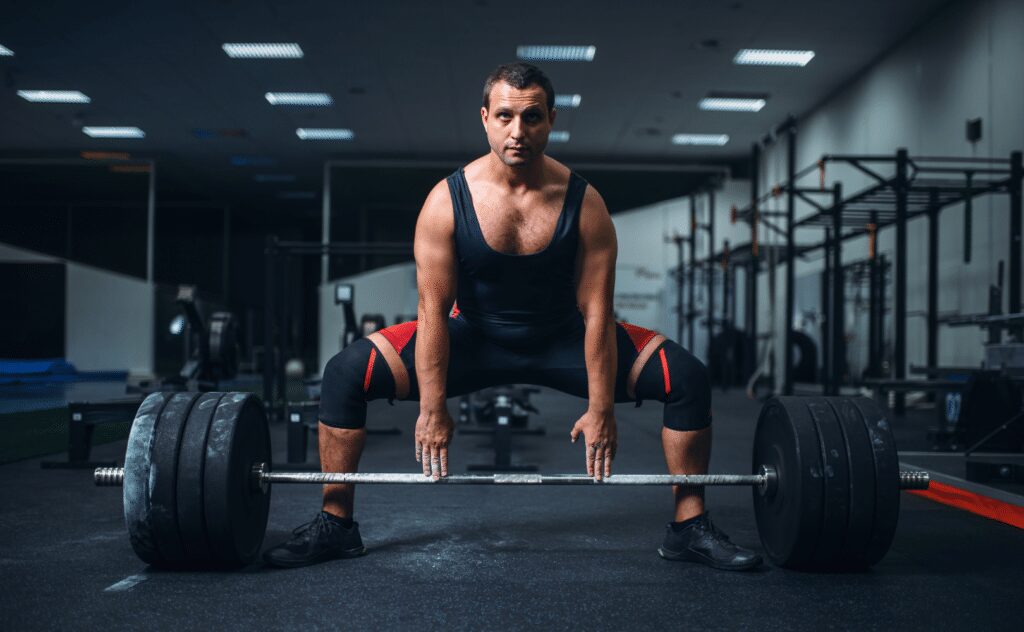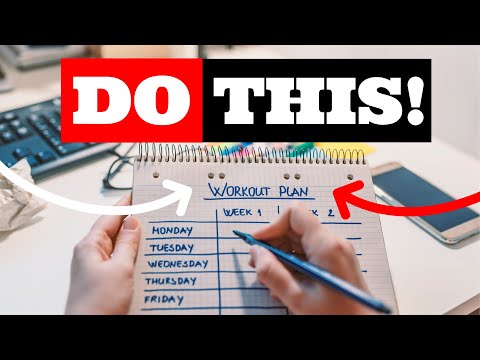Hello there! Dante here.
Curious about what PR means in the gym?
PR or “personal record,” also known as a PB or “personal best.” These terms are used interchangeably and mean the same thing.
It’s all about beating your own records—lifting more, running quicker, jumping higher.
Let’s learn more about PRs now!
Table Of Contents
Different Types Of Personal Records
There are different personal records depending on the type of training you want to do. If you’re an Olympic Weightlifter, you want to do more weight on the snatch and the Clean and Jerk. Whereas if you’re a cross-country runner, you probably want to improve how fast you’re running certain distances or even increase the distance you can run overall.
I’ll go more into depth on each of these Personal Records now!
What Is A Gym PR?

The main thing that people want to improve in the gym is building more strength and muscle and even losing body fat. Luckily, by improving how much weight you can lift over time, you’ll build muscle, get stronger, and stay leaner overall.
This is why strength training is one of the most important things to improve your overall fitness levels.
Here are a few of the different personal records that people track!
1RM – ONE REP MAX
Your One Rep Max or 1RM is the most notorious thing that lifters are obsessed with tracking.
This one is super easy to figure out and track. Let’s say you’ve done 200 lbs on the Bench Press, and you can’t do another rep; 200 lbs would be your one rep max! Over time, your goal would be to improve how much you can lift for a single rep on the bench press.
Of course, do this as safely as possible. Always make sure you have a spotter or set up your safeties on your power rack if you’re alone in a home gym. The worst-case scenario? Don’t use collars and turn the bar to one side, so the weights slide off, repeat on the other side, and then sit up with the empty barbell.
Also, when testing your 1RM, realize that you’re just TESTING; it’s not a suitable way to train FOR strength. If all you do is work up to an all-out single each workout, that’s not enough work to get stronger.

If that were the case, those guys who max out on the bench press with the same weight every Monday on International Bench Day would get stronger and stronger. Unfortunately, these guys get injured and tell you years from now that the bench press is bad for your shoulders, chest, elbows, etc.
Bottom line – work on getting stronger over time in all rep ranges to build muscle and strength. Testing your 1RM is for your ego, no matter how you slice it. If you aren’t a powerlifter, knowing that information is just going to let you know if you’re getting stronger or not.
So instead, check out the next section to see what you should do instead!
REP Maxes
Rep maxes, or your rep pr, are far more beneficial to track; the reason for this is pretty simple! Testing your 3, 5, 8, and 10+ rep maxes is much safer with lighter loads than an actual one rep max that puts your joints at risk.
If you’ve ever seen a man snap his pec tendon straight off the bone, you know how awful that type of injury is. You’re better off training with lighter loads and tracking those rep maxes instead. The primary distinction is that even the heaviest weight is stimulative enough to drive progress, get stronger, and even build muscle.
So you can do training cycles where you do multiple sets of 3 at heavy weights and get stronger without all the strain of building up to your maximum weight. You’ll build a substantial amount of muscle and strength training in 5,10, and even up to your 20 rep max for a particular exercise.

The best way to put it is this: if you go from 200 for 1 to 250 for 1, you got stronger, of course. But maxing out every time, trying to beat 200 every single workout, is going to beat up your body a lot more than lighter weights.
On the flip side, if you can do 200 for 10 and you get strong enough to do 250 for 10, that’s a way more substantial increase in strength, and I guarantee you’re going to be bigger because of it! You’ll probably be able to hit 200 for 20 reps, which is another new PR as well!
Take your 5 rep maxes to 10 rep maxes, and your 10 rep maxes to 20 rep maxes are going to do more for your strength and muscularity than just trying to beat your one rep max. Trust me!
What Does PR Mean In Fitness?
In general fitness, there are a couple of different Personal Records that you can track.
One of them is distance, where you can improve how far you run or how high you can jump. These are important records you need to keep track of, especially if you’re an athlete trying to improve your performance.
There is also a time personal record where you can improve how fast you can run a certain distance or even in CrossFit, where you try to beat the clock on your WOD.
Keeping track of these new personal records and improving upon them is what fitness is all about. If you always know what you did the previous week and what you need to do to beat it, that’s a great way to stay motivated and prevent yourself from being average. I’m just saying!
If you want to work on your general fitness, get stronger, run faster or longer, and do more over time. If you do that, your fitness will improve over time.
Gym PR Vs Competition PR
There are significant differences between a gym PR and a competition PR. With a gym PR, usually, you’re well-rested and don’t have the stress of competition potentially holding you back. After all, not everybody reacts to stress the same way. Some people thrive off of it while it crushes others.
That’s why in Powerlifting, people routinely say that a Gym personal record doesn’t count. They only count when done on the platform. These people have a point, as gym PRs are much easier to accumulate.
As for a competition PR, you have to make multiple heavy attempts with the heaviest weight you can handle. In Powerlifting, you have three attempts on the Squat, Bench, and Deadlift. Doing these on the same day within a couple of hours of each other is much more difficult.
Regardless, if your gym PRs get stronger over time, your competition PRs will get stronger right along with them.
Tracking PRs Makes More Sense With A Notebook
There are two methods I’ve used to track your personal records to ensure you’re getting stronger!
The first is a simple training notebook, the most important book you’ll ever own if your goal is to get better.
You write the weights you’re using, the reps you did, and even your energy levels/other notes you feel like tracking. I have 4 or 5 training notebooks on file that allow me to look back and see old records I’ve smashed. It also lets me know what training methods have worked for me and others that might not have agreed with me as much.
The second is something like the Strong App or even a bullet list notetaking app like WorkFlowy. Both allow you to consistently keep track of your training over time and have it synced between devices. This also makes it easy to copy and paste your previous training week, add weight, or make a note of what reps you need to beat.

Not having to write everything out by hand every single week for the rest of my life is pretty nice. This also allows you to search through your previous sessions which you can search through when needed.
Both of these methods work, but what matters the most is that you track your personal records. Beating the logbook means consistently beating your reps, adding weight, and getting stronger.
If you aren’t stronger now than you were 6 months ago, then what’s the point? Tracking prs makes your life a lot easier as you know exactly what you need to do to improve each week!
Frequently Asked Questions
Conclusion
Now that you know what a PR is, what personal records do you plan on tracking for your own workouts? Let me know in the comments section right now!
As for me, doing more reps and weight than last time is the name of the game, and I’m a player for life!
Until next time,
-Dante
